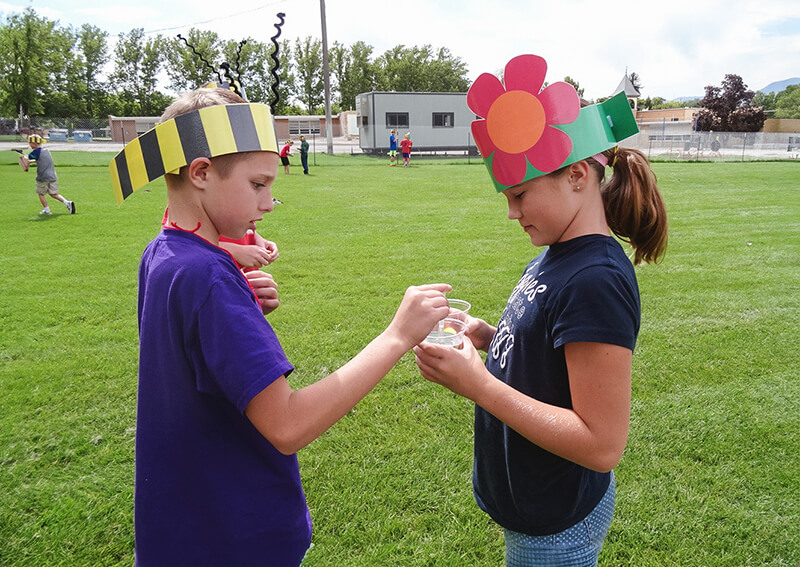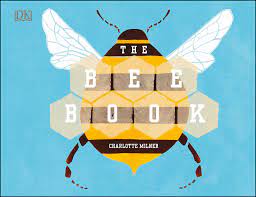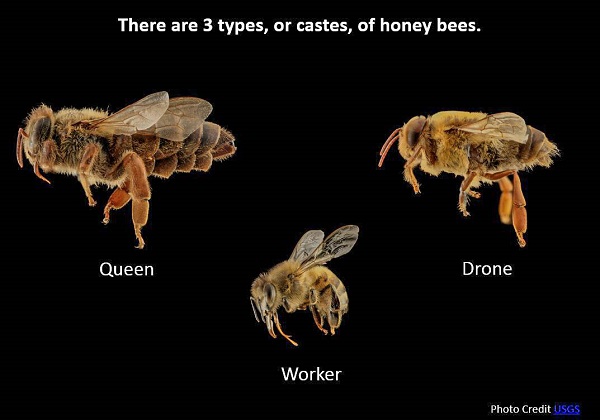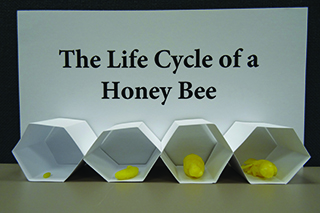Honey Bees: A Pollination Simulation
Students identify the parts of a honey bee, the stages of its life cycle, and its role in pollination.

Background
Lesson Activities
Recommended Companion Resources
Credits
Author
Lynn Wallin | Utah Agriculture in the Classroom
Standards
Indiana Content Area Standards
-
English Language Arts.Grade 3.RN.1
Read and comprehend a variety of nonfiction within a range of complexity appropriate for grades 2-3. By the end of grade 3, students interact with texts proficiently and independently.
- Key Ideas and Textual Support.3.RN.2.1: Ask and answer questions to demonstrate understanding of a text, referring explicitly to the text as the basis for the answers.
-
English Language Arts.Grade 3.SL.1
Listen actively and adjust the use of spoken language (e.g., conventions, style, vocabulary) to communicate effectively with a variety of audiences and for different purposes.
- Discussion and Collaboration.3.SL.2.1: Engage effectively in a range of collaborative discussions (one-on-one, in groups, and teacher-led) on grade- appropriate topics and texts, building on others ideas and expressing personal ideas clearly.
- Discussion and Collaboration.3.SL.2.2: Explore ideas under discussion by drawing on readings and other information.
- Presentation of Knowledge and Ideas.3.SL.4.1: Using appropriate language, report on a topic or text, or provide a narrative that organizes ideas chronologically or around major points of information, with appropriate facts and relevant, descriptive details, speaking at an understandable pace, in a clear, concise manner.
-
English Language Arts.Grade 4.RN.1
Read and comprehend a variety of nonfiction within a range of complexity appropriate for grades 4-5. By the end of grade 4, students interact with texts proficiently and independently at the low end of the range and with scaffolding as needed at the high end.
- Key Ideas and Textual Support.4.RN.2.1: Refer to details and examples in a text when explaining what a text says explicitly and when drawing inferences from the text.
-
English Language Arts.Grade 4.SL.1
Listen actively and adjust the use of spoken language (e.g., conventions, style, vocabulary) to communicate effectively with a variety of audiences and for different purposes.
- Discussion and Collaboration.4.SL.2.1: Engage effectively in a range of collaborative discussions (one-on-one, in groups, and teacher-led) on grade- appropriate topics and texts, building on others ideas and expressing personal ideas clearly.
- Discussion and Collaboration.4.SL.2.2: Explore ideas under discussion by drawing on readings and other information.
- Presentation of Knowledge and Ideas.4.SL.4.1: Using appropriate language, report on a topic or text or provide a narrative in an organized manner, with effective introductions and conclusions, using appropriate structure, appropriate facts and relevant, descriptive details to support main ideas or themes; speak clearly and concisely at an understandable pace.
-
English Language Arts.Grade 5.SL.1
Listen actively and adjust the use of spoken language (e.g., conventions, style, vocabulary) to communicate effectively with a variety of audiences and for different purposes.
- Discussion and Collaboration.5.SL.2.1: Engage effectively in a range of collaborative discussions (one-on-one, in groups, and teacher-led) on grade- appropriate topics and texts, building on others ideas and expressing personal ideas clearly.
- Discussion and Collaboration.5.SL.2.2: Reflect on and contribute to ideas under discussion by drawing on readings and other resources.
- Presentation of Knowledge and Ideas.5.SL.4.1: Using appropriate language, present information on a topic or text, narrative, or opinion in an organized manner, with effective introductions and conclusions, using appropriate structure, appropriate facts and relevant, descriptive details to support main ideas or themes; speak clearly and concisely at an understandable pace.


